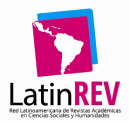Peer Review Process
First stage
All manuscripts submitted through the journal management system (Open Journal System, OJS) will be acknowledged by the same system if the submission process has been successful. The papers received are evaluated in a first stage by the Editorial Team in order to assess whether the subject matter addressed conforms to the scope declared by the journal, the compliance with the standards of academic writing and the requirements requested in the "guidelines for authors". If these requirements are not met, the contributions are rejected.
Second stage
When the first evaluation is positive, the date of receipt of the article is recorded and two external referees, specialists in the area of knowledge, will be appointed to judge the quality of the work. The evaluation system adopted by the journal is double-blind (the anonymity of authors and evaluators is preserved).
In the evaluation of the articles, those who act as peers follow the criteria included in the guide provided by the journal, focusing on the contribution to the field of social and human sciences, on the theoretical-methodological aspects of the study, on the argumentative style, and on discursive and formal aspects of the text.
The peers' verdict includes four possibilities:
- Accepted without change.
- Accepted with suggestions for minor changes.
- Accepted conditionally upon the incorporation of form and content changes (it is re-evaluated by a specialist in the area of knowledge).
- Rejected (the manuscript is returned to the author, along with the opinions of the reviewers).
If the article is rejected, the result of the evaluation is communicated. If the article is accepted, the date of acceptance is recorded, and the decision is communicated. If the article was conditionally accepted, the submitter is informed of the required changes.
When the result is 3 or 4, the manuscript is returned to the author to consider the changes suggested by the referees. When the result is 3, the new version must be sent within 15 (fifteen) days, and when the result is 4, the new version must be sent within 30 (thirty) days. The paper is then submitted to the Editorial Committee for consideration if the result is 3 or to the expert reviewer if the result is 4. Only up to two rounds of evaluation will be admitted. If the results of the first referee contradict each other, the contribution is sent to a third referee in order to confirm, extend or modify the previous ones. The Editorial Committee evaluates the results of the refereeing process and takes the decision it deems appropriate. In all cases, the decisions of the Editorial Committee are final.
Once the work has been accepted, the authors are informed of the volume and issue in which it will be published. The journal does not charge any fee for publication.
As soon as the article has been accepted, each author must send the acceptance of the transfer of rights and make the required formal and stylistic modifications in order to comply with academic writing standards.
The Editorial Team is responsible for correcting the style and formal aspects of each work. It is also responsible for preparing the HTML, PDF and EPUB versions for publication on the journal's website (https://www.clacso.org/tramas-y-redes/). It is estimated that the time between the reception of the article and the completion of the external evaluation process is between 60 (sixty) and 90 (ninety) days. The time between receipt and publication is 12 (twelve) to 18 (eighteen) months, depending on the flow of articles in the journal.







